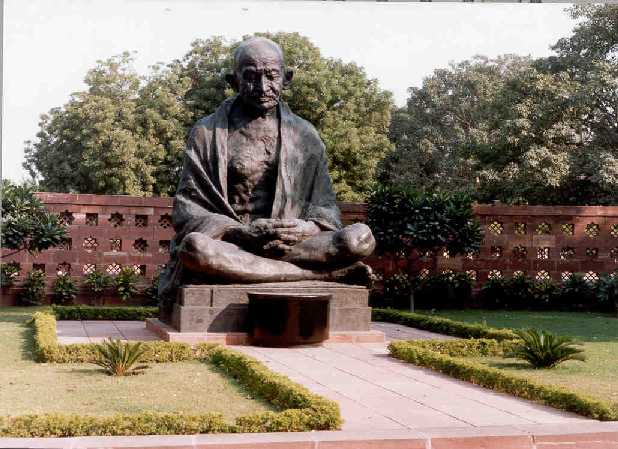Subhas Chandra Bose’s statue at India Gate in New Delhi was inaugurated last week, replacing the earlier statue of George V. I always wanted that space occupied by a statue of Mahatma Gandhi, something that never happened.
The BJP is excellent at messaging. This downplays the role of the Congress in Indian independence and highlights that of Bose, the only top non Congress leader of the Independence movement.
Okay, let us have a Bose statue. But let us also have a much bigger Gandhi statue to put in perspective the contribution of the two. There is a large empty space today between the Bose statue and the National Stadium. Congress and other parties should pledge to construct an Independence Monument in that space.
This monument should have a towering statue of Gandhi, symbolising his outstanding leadership of the Independence movement. It should be surrounded by smaller statues of other heroes of the Independence movement from every state, to inform future generations of the breadth of that movement. By all means include Shyama Prasad Mukherjee, founder of BJP’s forerunner — this should be a national monument, not one serving narrow political ends. Let the monument include scrolled tablets relating major events of the Independence movement — the Jallianwala Bagh massacre, the launch of Gandhi’s satyagraha, the Dandi Salt March, and the Quit India Movement.
Gandhi is one of the great figures of the 20th century, revered across the world. The Gandhian ideal of winning a battle not by force but through passive resistance (satyagraha) has become a famous philosophy of action. It inspired Martin Luther King in the US and Nelson Mandela in South Africa, who were sometimes called the ‘American Gandhi’ and ‘South African Gandhi’ respectively. Both succeeded in liberating their people by adopting the Mahatma’s ideals and tactics.
By contrast, Bose’s global image is tarnished by his association with Hitler and the Japanese by his association with Hitler and the Japanese imperial army, both of whom were guilty of untold atrocities. Bose adopted the adage, “The enemy of your enemy is your ally.” He believed he could ally with Hitler and Hirohito to expel the British, whom he saw as worse than fascists. He did not condemn Hitler’s mass murder of Jews and other minorities. His apologists will point to earlier criticisms Bose made of Hitler in the 1930s, but that will not remove the taint.
Nor did Bose condemn Japanese atrocities such as the Rape of Nanking, one of the most despicable outrages in history. He came to despise liberal democracy and sought a ‘New State’ drawing on elements of communism and fascism. Author Kapil Komireddi says, “It was a terrifying vision: a rigid central state held together by a national language written in the Roman script. It would practice a suffocating form of discipline at home and be closely aligned with the Axis powers abroad.”
Bose seriously believed that if he fought alongside the Japanese, they would conquer India and then hand it over to him to rule. This was fantasy. The Japanese did indeed invade the Andaman and Nicobar Islands and permitted Bose to raise an Indian flag, but they then ruled the Islands with a ruthless ferocity that appalled the locals. This has been spelled out by historians like Aparna Vaidik.
Let us be thankful that the Japanese were defeated and Bose’s plan failed. Yet in death he was reinvented as a hero. Even after death, he inspired the revolt of the Royal Indian Navy in 1946. Nehru, long a political foe, nevertheless praised Bose’s patriotism at the INA trials.
In Bengal nobody seemed to care overmuch Bose’s failure to condemn the Holocaust, and all lionised him. Many parties, in turn, sought to appropriate him — the Socialists, Communists, Congress, Trinamool Congress, and now the BJP. His name has been used to feed different mythologies for different political purposes.
Glossing over a great leader’s failings is common globally. Englishmen revere Winston Churchill for his leadership during World War II, ignoring his racism and contempt for human rights. Bose’s flirtation with fascism is similarly ignored in India.
What is most relevant today is that Bose was fundamentally a secularist, and contemptuous of the Hindu Mahasabha. He named his four brigades after Gandhi, Nehru, Maulana Azad, and himself. He translated ‘Indian National Army’ into ‘Azad Hind Fauj’, using three Urdu words and not Sanskrit or Hindi. His top military leaders included Sehgal (a Hindu), Dhillon (a Sikh), and Shahnawaz Khan (a Muslim). This vision of a united secular India was opposed to Savarkar’s Hindutva. We should honour this legacy of Bose in a new Independence Monument.
This article was originally published in The Times of India on September 17, 2022.


